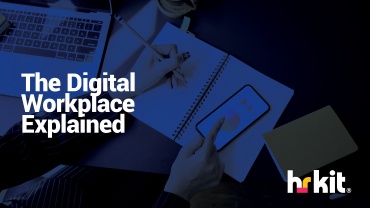All workplaces are now progressing with digitization. Digital working has a massive impact on employees, employers, and clients, both in the way they work and the technology they use.
What is the digital workplace? Does the way your company uses technology fit in with this new way of working? Is the new digital environment benefiting your company? HR KIT, the leading employee engagement and communication platform, answer these questions in this blog.
What is the Digital Workplace?
The digital or virtual workplace is not limited to a single physical space. Geographical boundaries do not limit the virtual world. Everyone connects through the Internet. In the digital workspace, employees are part of a collaborative working environment without the need to be in physical proximity to each other.
What Counts as a Digital Workplace?
A digital workplace can work in any industry. You just need to have a workforce distributed over several areas that are communicating through technology.
Some examples are:
· Telecommuting, which means you don’t need to get in the car to go to work but communicate with colleagues through comms platforms or project management software.
· Hot-desking is where you don’t sit in the same place all day but move between different locations in an office.
· Virtual teams that work in different locations across the world and communicate with each other via technology such as Skype, email, and voice conferencing systems.
Are digital workplaces good for business? Yes, if you set up the system correctly. The success of a digital environment depends on the size of the team, the type of digital platform used, and the nature of the work employees are performing.
What are the Benefits of a Digital Workplace?
1. Office space is no longer needed. Renting premises is a significant outlay for businesses, and now they can spend their money in more productive areas.
2. Modern working means allowing employees to be more relaxed and flexible, choosing their hours and how they work. Going digital enables workers to have a better work-life balance.
3. You can eliminate commuting costs. There is no need to move to a pricey city or spend all your money on petrol or train fares. Employees connect without the need for a central location.
What are the Disadvantages of a Digital Workplace?
1. Decreased productivity can be a problem. It is hard to monitor staff in a physical environment but even more difficult in a virtual one.
2. Lack of team spirit means workers can feel cut off from each other.
3. Reduced engagement can happen in a digital workspace. Disengagement can cause reduced productivity, absenteeism, and increase staff turnover, which affect company profitability.
How to Have a Successful Digital Workplace
Working digitally is going to increase in popularity. It can make the company more profitable if management implements it successfully. It is essential to buy the right digital communication platform so that there is no risk of employee disengagement.
HR KIT is the latest mobile staff engagement solution that streamlines internal communication, benefiting digital employees. To find out more, book a demonstration, contact us, or read through our case studies.


